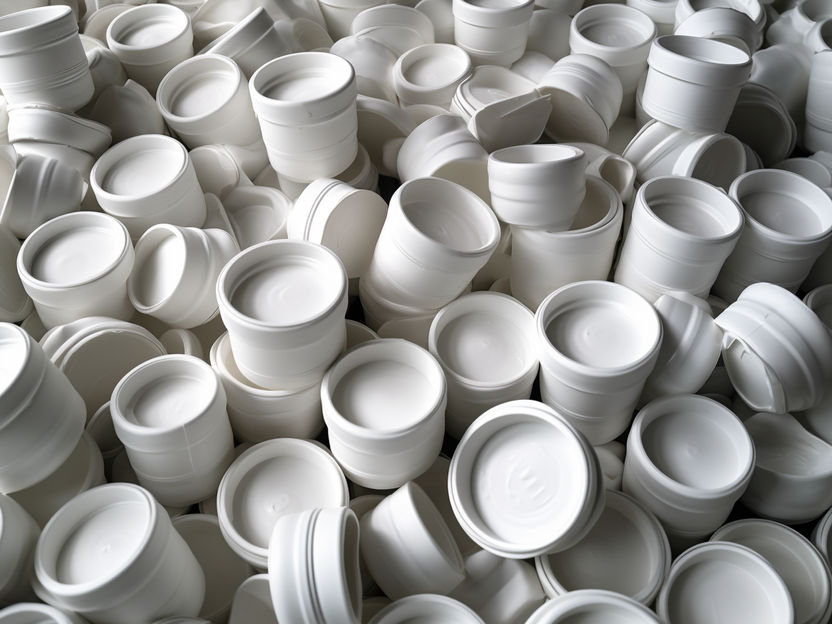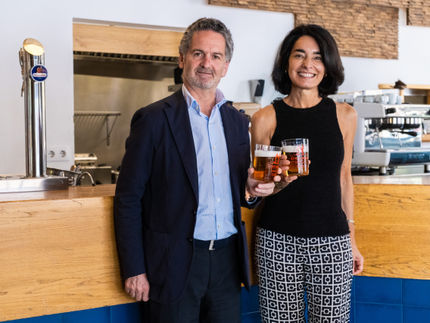The way of the yogurt cup: How plastic is recycled
Plastic waste can and will be recycled
The plastic net around the lemons, the plastic around the three peppers or the yogurt pot - such everyday packaging is often bad for the climate and the environment. According to a new study, however, greenhouse gas emissions from packaging in Germany could be reduced by 94 percent by 2045. That was the finding of a study presented Thursday by the Institute for Energy and Environmental Research in Heidelberg.
According to the study, emissions could already shrink by 46 percent by 2030 compared to 2021. More than half of the savings could be achieved through a climate and energy turnaround, for example through energy-saving production. A large proportion could also be saved through the type of packaging and the circular economy. Examples of this would be lighter packaging or increased use of recycled plastics.
Recyclates are the name given to plastics obtained from recycling processes. However, they are generally not suitable for use in new food packaging. "The yogurt cup in the yellow bag cannot become a new yogurt cup after recycling," explains Sandra Völker from waste disposal company Alba Berlin. Instead, she says, it can be used for toys or stadium chairs, for example.
Reducing waste and recycling it are considered some of the key pillars of European efforts to build a circular economy. EU-wide recycling targets have been set for the years 2025, 2030 and 2035. For example, starting in 2025, at least 55 percent of so-called municipal waste, such as waste from private households, must be recycled and prepared for reuse. Similarly, 65 percent of all packaging waste must be recycled.
Germany compares well in Europe: in 2020, 67 percent of municipal waste was recycled, as was 68.1 percent of packaging waste - meaning that the respective targets of at least 55 percent by 2025 have already been exceeded. Only the specific recycling target for plastic packaging (50 percent by 2025) has not yet been met, at 46.2 percent in 2020.
And the path to recyclate is long, as the example of the yogurt pot shows: from the yellow bag, it is taken to a sorting plant and first thrown onto a rough mountain with other lightweight packaging. From there, a wheel loader brings shovelfuls of trash into a container opener. "That rips open the trash bags, loosens everything up, and then it goes onto the conveyor belt," Völker says. The next step is sorting: The different materials are separated with wind machines, sieve drums that resemble washing machines, and also manually.
"After all, the yogurt cup today often consists of three things. The aluminum lid, the plastic cup and cardboard around it," says Völker. "Ideally, you separate all three things at home and throw the cardboard in the paper trash and the lid and becker separately in the recycling garbage can." Otherwise, he says, the machines sometimes get into trouble sorting.
At the light packaging plant of the recycling service provider Interzero, to which Alba Recycling belongs in Berlin, almost 60 percent of the waste becomes recyclates. 40 percent, on the other hand, goes to thermal recycling, i.e., is incinerated. The resulting energy can be used as electrical energy, heat or process steam.(dpa)

Computer generated picture
Note: This article has been translated using a computer system without human intervention. LUMITOS offers these automatic translations to present a wider range of current news. Since this article has been translated with automatic translation, it is possible that it contains errors in vocabulary, syntax or grammar. The original article in German can be found here.
Most read news
Other news from the department business & finance

Get the food & beverage industry in your inbox
By submitting this form you agree that LUMITOS AG will send you the newsletter(s) selected above by email. Your data will not be passed on to third parties. Your data will be stored and processed in accordance with our data protection regulations. LUMITOS may contact you by email for the purpose of advertising or market and opinion surveys. You can revoke your consent at any time without giving reasons to LUMITOS AG, Ernst-Augustin-Str. 2, 12489 Berlin, Germany or by e-mail at revoke@lumitos.com with effect for the future. In addition, each email contains a link to unsubscribe from the corresponding newsletter.


























































